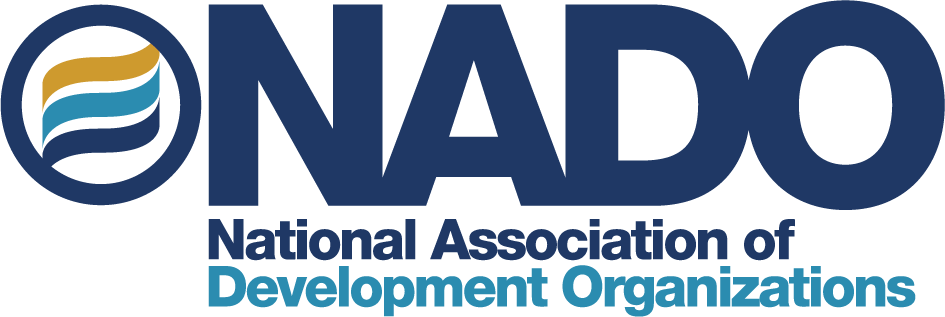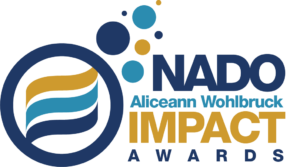
 Regional Hazard Mitigation Planning:
Regional Hazard Mitigation Planning:
As we have seen time and time again, natural disasters do not obey local jurisdictional boundaries. When this fact is combined with the reality of shrinking municipal budgets and growing responsibilities placed upon local planners, it is easy to see why regional hazard mitigation planning is gaining popularity throughout the country. Since local jurisdictions are required to maintain a current, FEMA-approved, hazard mitigation plan in order to be eligible for most FEMA funding programs, regional hazard mitigation planning activities offer the benefit of pooling regional resources and developing a more integrated regional approach to disaster planning across jurisdictional lines.
George Washington Regional Commission (GWRC)
The George Washington Regional Commission (GWRC) is one of 21 planning district commissions within the state of Virginia. As such, GWRC provides planning services for approximately 347,000 residents throughout the City of Fredericksburg and the four surrounding counties – Caroline, King George, Spotsylvania, and Stafford. Although the region has been fortunate to avoid substantial damage from natural disasters within the past several decades, it is susceptible to the effects of nor’easters, sinkholes, drought, extreme heat, hurricanes, severe thunderstorms, tornadoes, and even earthquakes, as demonstrated by the 2011 Mineral, VA earthquake just 40 miles southwest of the region. To help mitigate the risk posed by these threats, GWRC convened representatives from each of the region’s seven local jurisdictions to form a Mitigation Advisory Committee, which was tasked with updating a comprehensive hazard mitigation plan for the entire region.

According to Tim Ware, GWRC’s executive director, local leaders were eager to participate in the regional planning effort since funding eligibility for Federal Emergency Management Agency (FEMA) disaster relief programs requires an up-to-date local plan. Within the largely rural GWRC region, few localities have the funding or staff capacity to undertake such a planning effort on their own. Providing added inducement, the State of Virginia established an administrative policy that prioritized planning funds given to the state from FEMA for regional hazard mitigation plans rather than local applications.
Through the planning process, the Mitigation Advisory Committee identified four primary goals for the regional plan: (1) reduce the future impacts and losses from identified hazards; (2) educate and engage the public regarding hazards, their impacts, and feasible actions; (3) maximize the impact of public resources through effective coordination among agencies and the efficient use of technology; and (4) improve and enhance emergency management capabilities. To ensure that the regional plan fulfilled local needs and met federal standards, community-specific hazard identification, vulnerability assessments, and capability assessments were conducted for each jurisdiction, in addition to regional analysis. This layered approach resulted in not only a unified methodology and coordinated plan throughout the region, but also identified key areas for cross-jurisdictional collaboration and building of new partnerships.

According to Ware, the success of this regional planning effort, which was approved by the State and Federal agencies in record-setting time, led to a regional grant application to explore the feasibility of regional approaches to fulfilling federal emergency planning committee requirements and a study of ways to improve emergency planning coordination throughout the region. The relationships formed through this process also led to new technical assistance programs provided by GWRC to help the City of Fredericksburg and the adjoining counties of Stafford and Spotsylvania better align city and county emergency response areas to improve response times and reduce operating costs for all parties involved. By encouraging communities to look beyond their borders at regional assets and shared interests, this regional planning effort has helped show local leaders the importance of breaking down barriers and coming up with creative solutions to work together.
Key Strategies for Success:
Serve as a convener for a regional conversation on disaster preparedness – regional development organizations are uniquely positioned to serve as regional conveners and facilitators of collaborative efforts. It is important that RDOs are not perceived as the ‘enforcer’ for mitigation efforts, but rather an equal partner in the process.
Don’t underestimate the importance of staff leadership – although GWRC contracted with a technical consultant for portions of the regional hazard mitigation plan, they had a designated staff member oversee the management of the plan update, coordinate activities of the planning committee, and serve as a point of contact for all parties involved. It is critical to have a strong leader that can effectively engage across sectors to break down communication and functional barriers.
Seek out local champions – you must engage local leaders who understand the benefits of a regionalized effort and are willing to engage with the efforts and advocate for the plan. You need people in your corner to change the status quo.
Integrating Hazard Mitigation Plans with Local Comprehensive Plans:
In most jurisdictions throughout the country, planning documents are developed with a narrow focus and little attention is paid to integration of plans despite many overlapping objectives and goals for the community. Most jurisdictions are required to produce a local comprehensive plan to provide the framework for long-term development within their borders. Similarly, most jurisdictions are required to produce hazard mitigation plans to address potential vulnerabilities, continuity concerns, and emergency management needs within their borders. If properly integrated, communities can reduce their vulnerability and exposure to hazards by properly managing land use and development patterns. Although the connection between these two planning documents is clear, integrating them can prove more difficult in practice.
Southern Mississippi Planning and Development District
 The Southern Mississippi Planning and Development District (SMPDD) is no stranger to the devastating economic impact of disasters. Serving 15 counties in southeast Mississippi, the region’s economy has been disrupted by both natural and manmade hazards, most notably including Hurricane Katrina and the 2010 Deepwater Horizon Oil Spill. Given the region’s susceptibility to these and other economic shocks, the District has long assisted counties and municipalities within its borders with local hazard mitigation plans, floodplain management strategies, and post-disaster needs assessments. However, in 2012, the District went a step further and contracted with the Mississippi-Alabama Sea Grant Consortium to conduct a study on the best way to integrate hazard mitigation principles into local comprehensive plans throughout the Mississippi Gulf Coast.
The Southern Mississippi Planning and Development District (SMPDD) is no stranger to the devastating economic impact of disasters. Serving 15 counties in southeast Mississippi, the region’s economy has been disrupted by both natural and manmade hazards, most notably including Hurricane Katrina and the 2010 Deepwater Horizon Oil Spill. Given the region’s susceptibility to these and other economic shocks, the District has long assisted counties and municipalities within its borders with local hazard mitigation plans, floodplain management strategies, and post-disaster needs assessments. However, in 2012, the District went a step further and contracted with the Mississippi-Alabama Sea Grant Consortium to conduct a study on the best way to integrate hazard mitigation principles into local comprehensive plans throughout the Mississippi Gulf Coast.
 The study is based on an idea advocated by the American Planning Association, which states that “hazard mitigation works best as a policy objective of local planning when it is so completely integrated into the comprehensive plan that it becomes a normal assumption behind all daily planning activities.” With this goal in mind, the District chose six coastal counties and 15 municipalities to help develop and pilot the new tools for plan integration.
The study is based on an idea advocated by the American Planning Association, which states that “hazard mitigation works best as a policy objective of local planning when it is so completely integrated into the comprehensive plan that it becomes a normal assumption behind all daily planning activities.” With this goal in mind, the District chose six coastal counties and 15 municipalities to help develop and pilot the new tools for plan integration.
After working with local planners to select 29 hazard mitigation principles that would be used as indicators, staff reviewed all comprehensive plans within the study area to determine where gaps existed in incorporating the mitigation principles into the local comprehensive plans. Examples of indicators include those more commonly included such as protection of historic and cultural resources and the less commonly considered such as planning for continuity of local government operations. Once the gaps were identified, the District created a guide for integrating the hazard mitigation principles into comprehensive plans by providing recommendations on where within the four standard components of a comprehensive plan, as required by Mississippi Code, the principles best fit. For example, the guide states that the protection of historic and cultural resources fit most naturally within the land use requirement, while planning for the continuity of local government operations fit most logically within the community facilities requirement. The final report also provided local leaders with information on where to find examples of neighboring communities that had successfully incorporated a given principle within their local comprehensive plan.

According to Allison Beasley, planning director for SMPDD, the project was well received by local leaders and sparked exciting new conversations about the need for resilience within the region. “This study was a powerful tool for showcasing the importance of moving beyond emergency response and exploring the importance of having plans and strategies in place that protect our resources, our environment, our businesses, and our people.”
Beasley also noted the growing importance of business continuity and economic diversity initiatives, which align with the goals of the study. In fact, the District has incorporated the broader goals of this study into their most recent Comprehensive Economic Development Strategy (CEDS) document. The CEDS includes an analysis of external forces that can impact the region, including natural, manmade, economic, political, and social changes or disruptions that present either a threat or an opportunity for the regional economy. In addition to this hazard identification, the CEDS identifies regionalism in the face of disasters, downturns, or other interruptions as a key goal for the long-term prosperity of the region.
Key Strategies for Success:
Bring different types of planners into the same room – too often hazard mitigation planners, land use planners, economic development planners, etc. do not talk to each other. Through this project, SMPDD broke down the communication barriers that separated different planning professionals to help them recognize how their work intersects
Don’t just point out local shortcomings, offer solutions – by providing a one-stop shop for best practices from neighboring jurisdictions, this study provided a path for local jurisdictions to not only understand what they should be doing, but also understand what that looks like within the region
Sources:
“GWRC Hazard Mitigation Plan.” George Washington Regional Commission, 1 Mar. 2012. Web. <http://www.gwregion.org/wp-content/uploads/2012/01/DRAFT-GWRC-Hazard-Mitigation-Plan-01.23.12.pdf>.
“Integrating Hazard Mitigation into Local Planning to Support Community Resilience on the Mississippi Gulf Coast.” Southern Mississippi Planning and Development District, 1 Jan. 2013. Web. <http://msatlas.org/assets/Planning/publications/HM_Integration_Final.pdf>.
Personal Communication with Tim Ware, March 17, 2015
Personal Interview with Allison Beasley, March 27, 2015
This case study was written by Lexie Albe, Community and Economic Resilience Fellow.



